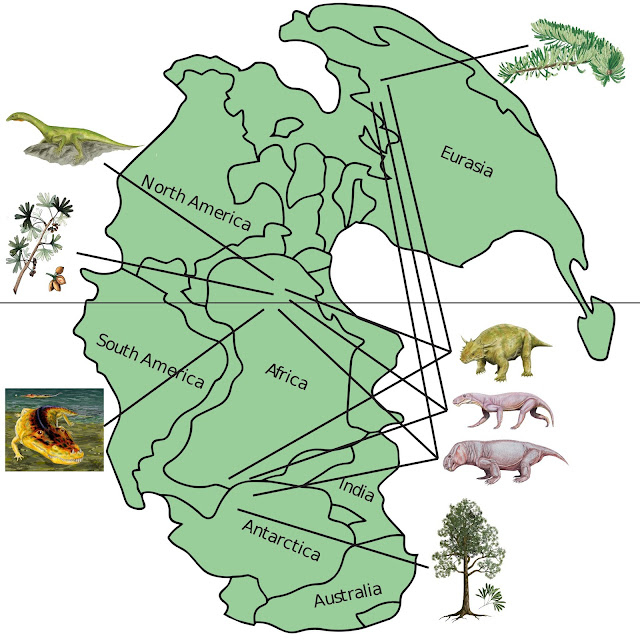A whopping 252 million years ago, Earth was crawling with bizarre animals, including dinosaur cousins resembling Komodo dragons and bulky early mammal-relatives, a million years before dinosaurs even existed. New research shows us that the Permian equator was both a literal and figurative hotspot: it was, for the most part, a scorching hot desert, on top of having a concentration of unique animals. Here, you could find some of the first tetrapods to emerge from the water and live on land, living right next to newly evolved, dinosaur and crocodile-like reptiles. Many of these species were wiped out after an extinction which changed life on the planet forever.
Earth-Science Reviews, paleontologists studied fossil sites all over the world from the late Permian to get an idea of what lived where. They found an unusual assortment of species near the equator, and one that is comparable to the modern tropics -- except that the array of large, carnivorous reptiles would look very out of place anywhere on Earth today.
"The tropics act as a diversity center -- stuff that has gone extinct elsewhere is still alive there, and there's new stuff evolving," explains Postdoctoral Researcher Brandon Peecook, co-author of the paper. While it makes sense that the warm, wet rainforests we see now have incredible diversity, it seems counterintuitive that these fiery, hot deserts were home to an exceptional range of species, especially because diversity at the equator fluctuates so much historically.
 |
| One of the study's authors, Brandon Peecook, doing fieldwork [Credit: Brandon Peecook, The Field Museum] |
This unequaled comparison of Permian climate and species distribution to modern events shows us that while many changes are natural and we see them throughout our planet's history, drastic changes like this can be triggered by something much larger -- volcanic activity likely caused this in the Permian, and human activity is the suspected culprit today. After the Permian extinction, "it was almost as though the slate had been wiped clean, and all the ecosystems had to rebuild," says Peecook. This event altered life permanently and while new animals evolved and thrived, the process of recovery took millions of years, and the animals that were lost never returned.
"If we want to know how Earth's systems work, what's expected and what's normal, we need to look to the past," and the fossil record is the best measure of ecosystem stability. As we already begin to face extinctions and carbon levels similar to those before the Permian extinction, examining these patterns over time gives us the evidence we need to measure and minimize our impact on climate, preventing further permanent damage to our planet's ecosystems and animals.
Source: Field Museum [December 11, 2017]

